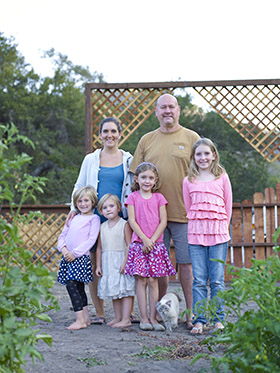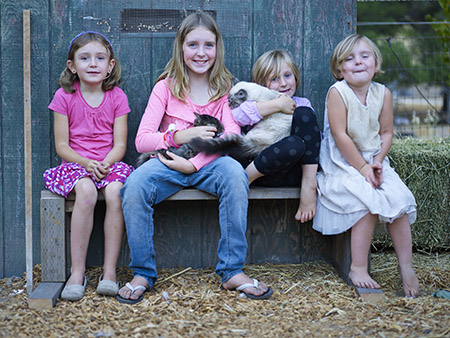 October 29, 2012 started out as a typical Monday for Christine and Doug Navolt. But when Doug never came home or answered her phone calls, Christine knew something was wrong and began calling local hospitals.
October 29, 2012 started out as a typical Monday for Christine and Doug Navolt. But when Doug never came home or answered her phone calls, Christine knew something was wrong and began calling local hospitals.
By that time, Doug was in the ICU at Sierra Vista Regional Medical Center. He had purchased a motorcycle just two weeks before, and on his way home that Monday, an elderly woman pulled her car out in front of him and his motorcycle slammed head-on into her car.
“He had punctured his lungs, one of which had collapsed, and so he wasn’t breathing at the time of the accident,” Christine was told. Doug doesn’t remember much of anything around the time of the accident. Along with a severely traumatic head injury, he broke his ribs and neck, damaged his left foot and leg, and severed the main tendon in his left shoulder. Law enforcement officials at the scene investigated it as a fatal accident, Christine said. Doug was unresponsive and unconscious.
“They told me he could basically be a vegetable by the time they got him to Sierra Vista’s ICU,” Christine recalled, adding that he was in a coma for about a week.
By the time Doug woke up, community support began pouring in. On December 6, he was transferred to the Acute Rehabilitation Center at AGCH, where he began his road to recovery. He still couldn’t walk and talk, but he could throw a ball with his right hand and catch it.
No Place Like Home
“We thought we would have to go to L.A. or some place out of the area (for his physical rehabilitation),” Christine said. Their family has lived in the Arroyo Grande Valley for generations and she wanted to keep Doug close to home. So they were thrilled when he was accepted at the Acute Rehabilitation Center at AGCH.
Studies show that patients heal quicker and more successfully when they are close to family and friends, which is why the center was opened in 2011 in the first place. Thanks to generous donations to the AGCH Foundation from community donors, it is the only facility of its kind within a 100-mile radius.
As opposed to Skilled Nursing Facilities, which comprise the bulk of California’s rehabilitation industry, AGCH provides unmatched medical management: a five-to-one patient-to-Registered-Nurse ratio and face-to-face, doctor-patient meetings at least three times per week, as well as weekly care team conferences. The center also provides a full scope of physical, occupational and speech therapies, along with prosthetics, orthotics and social work.
Dedicated to helping patients regain function, Acute Care Rehab is like a boot camp for intense, accelerated physical rehabilitation. The Acute Rehabilitation Center at AGCH has an 80 percent return-to-home rate. By the time Doug was discharged to go home about a month and half after being admitted, he was walking and talking again.
A Family of Caring Doctors, Nurses
“I thought hospitals were a terrible place to be admitted, but (Arroyo Grande Community Hospital) is the opposite of terrible,” Doug said of his time there. “The entire time I was there was enjoyable.”
The Navolts were no stranger to hospitals. When Doug’s daughter, Holly, from a previous marriage, needed a double lung transplant, the couple and their three small children relocated to the Bay Area so Holly could be close to her medical providers. A month later, Christine gave birth to daughter number four. In 2011, the family moved back to the Five Cities area and, sadly, Holly passed away on Christmas Day that year. Just 10 months later, Doug was critically injured in the accident.
“This place is filled with love,” Doug said of the Acute Rehabilitation Center at AGCH. “We had a lot of past hospital experiences, because when my oldest daughter was alive, we would go with her to the hospital. And no one in the hospital would treat anyone the way they treat you here (at AGCH). I know that everyone wants to do a good job, but in this place, they truly show their hearts and how much they love their patients.”
Christine agrees that the staff went above and beyond. Doctors and nurses were willing to work with some of the homeopathic requests she made for his care, and made it a point to offer Christine a meal every time she came to visit. She said that their four daughters – Grace, Abigail, Bethea and Elaina – would come to the hospital nearly every day with her, and the staff treated them like family, too.
“We spent Christmas here with him at the rehab center, and on Christmas morning, the staff took pictures and celebrated with us,” Christine said with a smile. “They even gave us a gift card to Walmart so we could buy presents. We really felt like everybody was extremely supportive of the process.”
Doug hasn’t made a full recovery, but he’s come a long way, she added. He isn’t currently doing any rehab, but therapists from the center would visit their house three days a week for the first month after he was discharged and he continued to make very good progress.
“God blessed me,” Doug explained. “This is a big family. They changed from Arroyo Grande hospital to Arroyo Grande family.”
Although Doug still has some trouble speaking, he is coherent, thoughtful and able to express himself poignantly. Therapy continued at the hospital after the home therapy ended, and though Christine admits that speech therapy could have gone on a bit longer, she says they were trying to find other methods that would help Doug get further along in the healing process. And eventually they both went back to school for nine months.
Now, Doug is building a woodworking workshop at their home in the Arroyo Grande Valley, where Christine’s family has lived for four generations. Though Christine says he’s not at this point able to step back into anything full time, he’s still making progress toward being able to earn an income again.
The two celebrated their 10-year wedding anniversary in May, and both are so grateful to have made it this far. They periodically visit the Acute Rehabilitation Center at AGCH, just to say hi.
“I miss everyone here,” Doug said. “Everyone who comes here should consider this entire hospital part of their family. I do.”